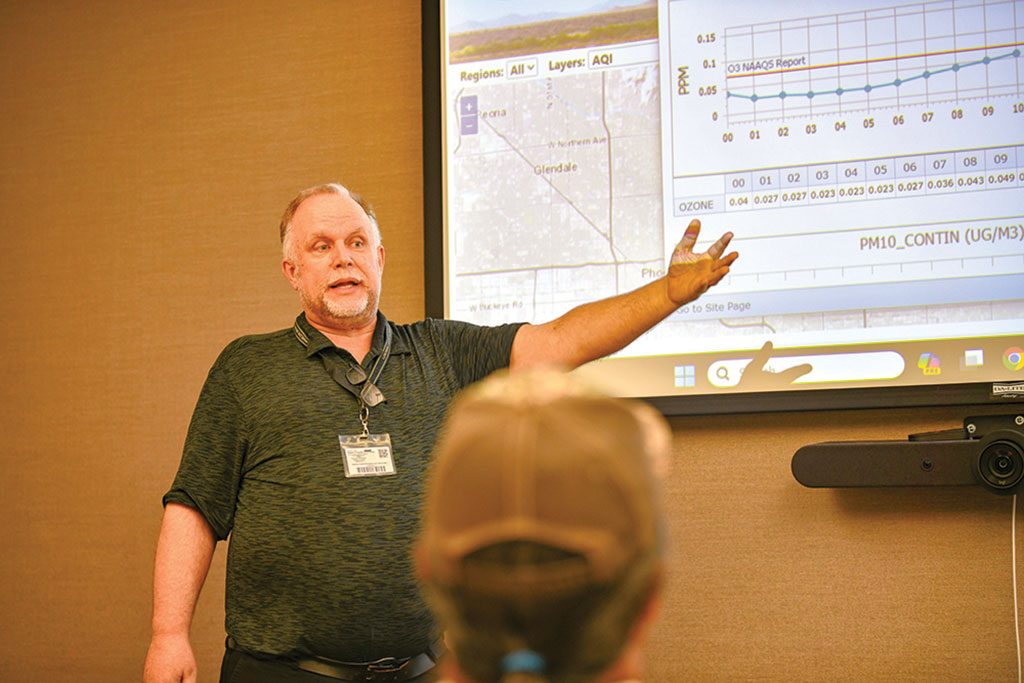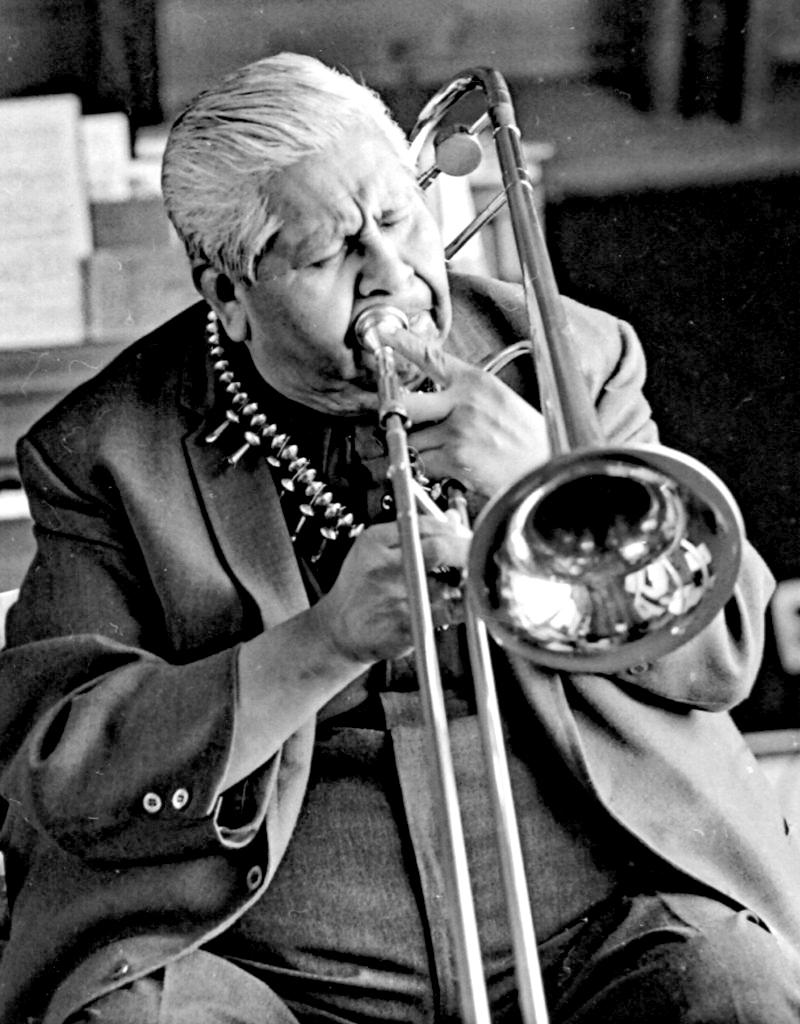VIEWS: 1084
July 2, 2024SRPMIC Air Quality Program Hosts Public Meeting on 2023 Air Monitoring Report
On May 29, the Salt River Pima-Maricopa Indian Community Air Quality Program (AQP) hosted a public meeting to reveal the department’s air monitoring network report for the year 2023. Hosted in the Two Waters B building in the Stars Room, the meeting was nearly at maximum capacity with SRPMIC members and staff.
Environmental engineer Ben Davis served as the host and introduced the other members of the AQP team: Mangas Slinkey, senior environmental specialist; Stephanie Lane, senior environmental specialist; and Zonnie Olivas, environmental specialist and the newest member of the AQP team. Senior Environmental Engineer Regina Leverette-Mason and Assistant Community Development Department Director Christopher Horan were also in attendance and assisted with answering questions from the public.
“I’m responsible for maintaining our [air quality] monitors that are out in the field, making sure they are operating within the guidelines of the Environmental Protection Agency (EPA),” said Slinkey as part of his introduction. Lane was out of the office during the meeting, which allowed for Olivas to introduce herself next and begin her presentation.
“I used to work with the Tohono O’odham Nation down in Sells,” began Olivas. Her presentation featured information regarding the Climate Pollution Reduction Grant, an EPA grant program that provides monetary compensation to states, governments, tribes and territories to develop plans for reducing greenhouse-gas emissions and other harmful air pollutants.
“The tribe felt this was an important program to prioritize going after the grant funds and to develop a plan,” Olivas said. SRPMIC was awarded the grant in July 2023.
Olivas then detailed how the grant has two phases, planning and implementation. In April, the AQP team submitted their application to receive additional grant funds to create methods to continue to improve the air quality in the Community.
“We also completed a Greenhouse Gas Emissions Inventory,” said Olivas. Greenhouse gas emissions include nitrous oxide, methane and carbon dioxide. During their investigation and research, the AQP discovered that the majority of the Community’s air pollution comes from vehicle emissions on nearby highways.
“That was really important for us to find out,” said Olivas. She explained that the Community has begun reducing greenhouse gas emissions by converting the Community’s fleet vehicles to electric energy, as opposed to utilizing fuel.
To further gather information on how to improve the Community’s air quality, the AQP asked SRPMIC members to submit feedback to the AQP via an online QR code as well as in person. “We had a good turnout at the Senior Breakfast recently,” said Olivas. The AQP team visited with the seniors and received nearly 100 responses. “So far, we’ve received about 60 or so online questionnaires [from our QR code] as well,” Olivas said.
The feedback received from Community members will be analyzed by the AQP team as they create additional plans to continue maintaining good air quality throughout the Community.
“If we were able to get an app for Community members to get on their phones [to see the air quality levels], who would opt in to that?” asked Leverette-Mason to the group. When the majority of the attendees raised their hands, the AQP team said they would continue developing a plan to implement up-to-the-minute air-quality notifications for the Community.
Those interested in viewing up-to-the-minute air quality at the four SRPMIC air monitoring stations can visit the AQP SRPMIC monitoring website at https://srp.agilaire.com/airvision.
To contact the AQP directly, their email address is epnr@srpmic-nsn.gov. They also can be reached at (480) 362-7500.







